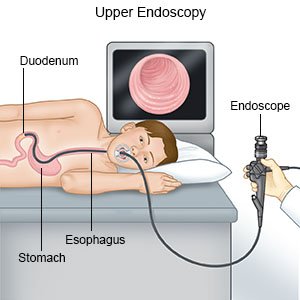Foreign Body Ingestion in Children
Medically reviewed by Drugs.com. Last updated on Aug 4, 2025.
What is foreign body ingestion?
Foreign body ingestion means your child swallowed an object that is not food. Coins, button batteries, small toys, and screws are commonly swallowed objects. A foreign body can cause problems as it moves through your child's digestive system. Foreign body ingestion is most common in children ages 6 months to 3 years. This is because babies and toddlers learn by putting objects in their mouths.
What are the signs and symptoms of foreign body ingestion?
- Not wanting to eat, or refusing food that is offered
- Drooling or vomiting
- Bloody vomit or rectal bleeding
- Chest pain, abdominal pain, or a feeling that something is stuck
- Irritability and changes in behavior
How is foreign body ingestion diagnosed?
Your child's healthcare provider will examine your child's throat, chest, and abdomen. Tell the provider the type of object your child swallowed and when he or she swallowed it. The provider may use any of the following to find the object:
- A barium swallow or other x-rays may be used to check your child's neck, chest, and abdomen. Your child will drink thick liquid called barium while healthcare providers take x-rays. Barium helps your child's esophagus and stomach show up on x-rays.
- A metal detector may be used to look for coins or other metal objects in your child's body.
- A CT may be used to check for objects in your child's esophagus or stomach. Your child may be given contrast liquid to help his or her stomach show up better. Tell the healthcare provider if your child has ever had an allergic reaction to contrast liquid.
- Endoscopy may be used to see the inside of your child's digestive system. A scope is a long, bendable tube with a light on the end of it. A camera attached to the scope will take pictures.

How is foreign body ingestion treated?
Your child's healthcare provider may choose to observe your child for 24 hours or longer. Your child may need x-rays while he or she waits for the object to come out. If your child is in pain or the object is large or sharp, a provider may remove it with any of the following:
- Endoscopy may be used to remove the object.
- Surgery may be needed if other treatments fail to remove the object.
What can I do to help my child manage or prevent foreign body ingestion?
- Search for the object every time your child has a bowel movement. Most objects pass through the digestive system and come out in a bowel movement. Objects that are small or smooth will often pass without a problem. Do not give your child laxatives or stool softeners. Do not force your child to vomit.
- Keep small objects out of your child's reach. Some examples include magnets, jewelry, keys, and coins. Handheld video games, flashlights, hearing aids, and cameras may have button batteries. Button batteries and magnets must be removed if swallowed.
- Teach older children to keep small toys away from babies and toddlers. Marbles are especially easy for babies to swallow.
- Keep nails and screws away from children. Count them before and after you finish a project.
- Keep medicines in childproof containers. Do this in your home and also in any purse or bag where you keep extra medicine. All medicines, vitamins, herbs, and supplements need to be kept in childproof containers.
When should I seek immediate care?
- Your child has a fever.
- Your child has severe abdominal pain, nausea, or vomiting.
- Your child's vomit or saliva is bloody.
- Your child's bowel movements are black or bloody.
When should I call my child's doctor?
- You do not find the object in your child's bowel movement within 3 days.
- Your child does not want to eat because of abdominal pain or vomiting.
- Your child is drooling or hoarse.
- You have questions or concerns about your child's condition or care.
Care Agreement
You have the right to help plan your child's care. Learn about your child's health condition and how it may be treated. Discuss treatment options with your child's healthcare providers to decide what care you want for your child. The above information is an educational aid only. It is not intended as medical advice for individual conditions or treatments. Talk to your doctor, nurse or pharmacist before following any medical regimen to see if it is safe and effective for you.© Copyright Merative 2025 Information is for End User's use only and may not be sold, redistributed or otherwise used for commercial purposes.
Further information
Always consult your healthcare provider to ensure the information displayed on this page applies to your personal circumstances.
